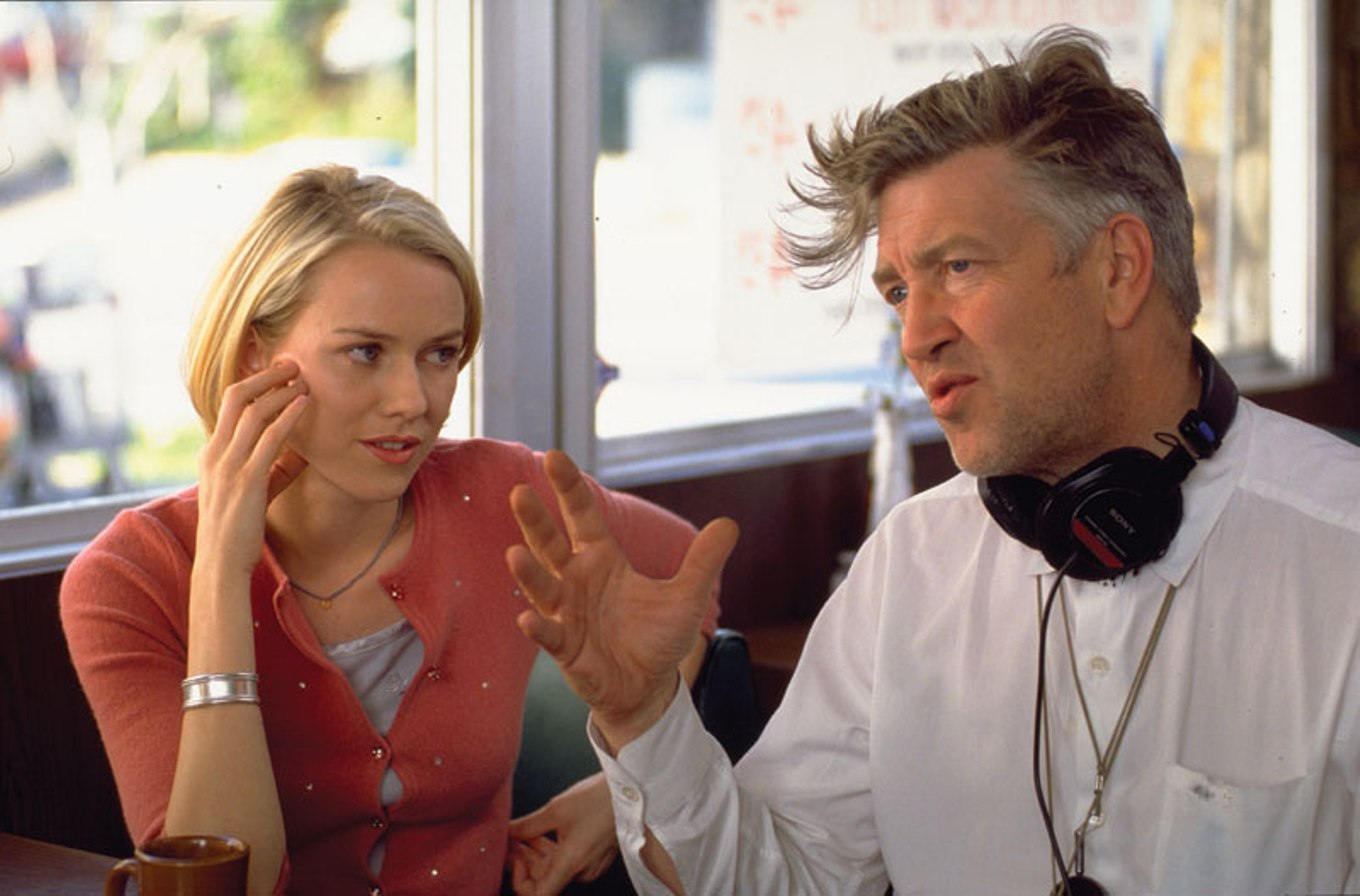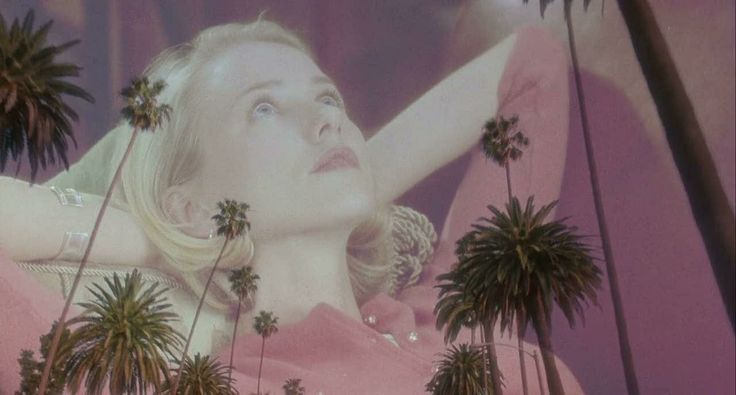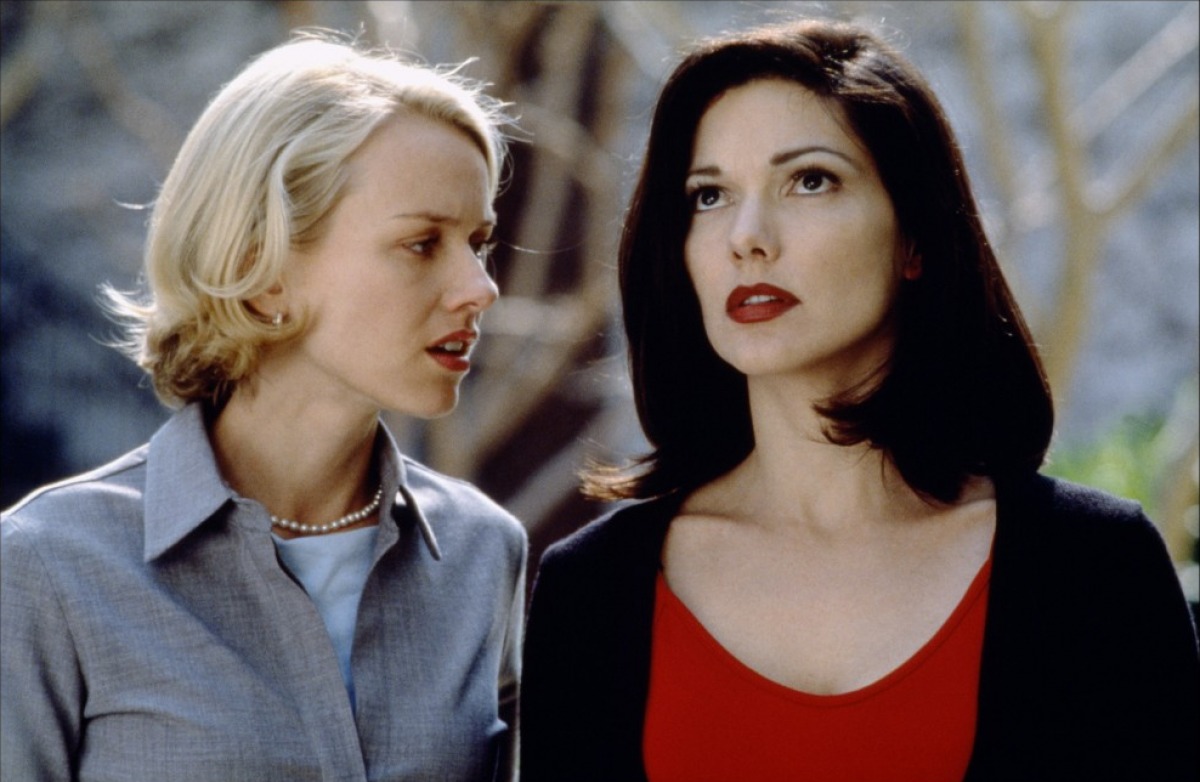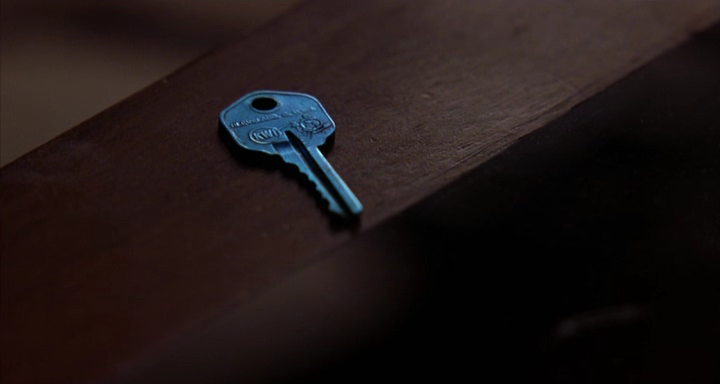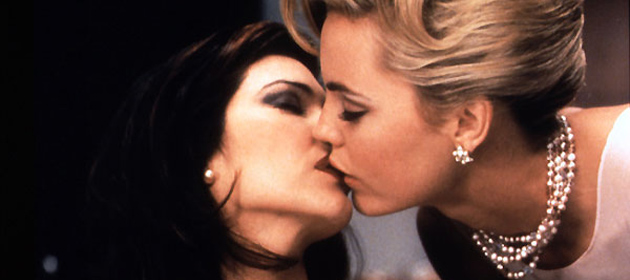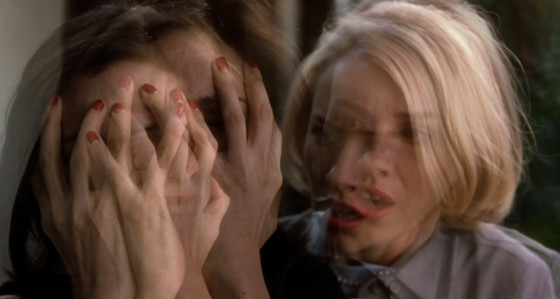After an unusual The Straight Story, the master of mind-blowing surrealism, David Lynch, came out with the highly acclaimed Mulholland Drive, a neo-noir mystery thriller which draws on dream interpretation. Frankly, the movie could be interpreted as an improved version of Twin Peaks: Fire walk with me. Both films share many motifs and themes as well as other elements, such as non-linear narrative structure, the extensive use of the color red, and interpretations of vintage songs.
The beginning grabs our attention with an awesome surreal jitterbug dance scene, warning the viewer that the movie is not going to be the usual Saturday night feature you can enjoy with your family. The etymology of the “jitterbug ” itself derives from the term delirium tremens, perhaps serving as an ominous clue to the psychological and emotional changes one is going to experience while viewing.
After a brief dream-like scene, we see a red pillow. This is the first of the many recurring red elements in the movie. Not only is the predominance of the color red here reminiscent of its frequent use in Twin Peaks, but here too we have a red room similar to the Red Room from the Black Lodge in Twin Peaks.
Another Lynchean characteristic, the non-linear narrative, now becomes evident as the scene of an injured girl who escaped her own attempted murder and is now wandering mindless intercuts with another scene – that of a man and his nightmare. The dream motif now becomes central. In a particularly frightening turn, this man experiences a terrifying figure which trespasses on both his dreams and reality – the man behind the diner, who is very reminiscent of Killer Bob from Twin Peaks.
It is impossible to ignore the fact that most of the main characters are living a dream of their own. The man is haunted and eventually consumed by his own fears and nightmares; Betty, the aspiring actress, is living her own dream of becoming a big movie star; and ‘Rita’, the unknown girl who is suffering from amnesia brought about by a car accident, is now living in a dream-like world against her will.
Given the director’s own refusal to provide a logical explanation for the symbolism of the film, it seems futile to attempt to arrive at a single, fixed interpretation. Lynch’s refusal can surely be read as a desire to have his viewers arrive at their own individual interpretations. Individuality is, in fact, a key element in the interpretation of dreams. All three of the characters have different perspectives on dreaming: for Betty, a dream is her aunt’s house as she herself refers to it as “this dream place” (perhaps a tinge of black humour on the part of the director); for the unknown man it represents nightmare and fear; for Rita it is an amnesiac experience. The viewer himself seems to be involved, possibly finding a means of surrealistic escape in the movie.
While trying to find a way for Rita to recover her memory, the two women go to the Winkies diner where Rita sees the name “Diane” on a waitress’ badge and suddenly remembers the name “Diane Selwyn”. The diner becomes a key element in the movie, maybe even a strong motif.
After a mysterious Camilla Rhodes takes Betty’s desired role in the movie for which she was auditioning, the two women go to the house of someone named Diane Selwyn to find, to their horror, the dead and rotting corpse of a woman lying on the bed. After they return home and make love, Rita has a nightmarish experience in which she is repeating the word “silencio” along with other Spanish expressions – a scene that has a strong connection to the end of the movie.
They take a cab to a theatre where they attend surrealist musical interpretations. The color red predominates once again, possibly symbolising blood, fear or even fire. Betty takes a blue cube-like box out of her purse; this seems linked to a blue key shown earlier. Back home, Betty suddenly disappears and Rita unlocks the box and then falls on the floor. The Box could symbolize the gate to the real world, as we shall observe, and perhaps also a hidden truth; while the key may be the means by which one would open this gate to the real world.
The next scene shows the dead woman mentioned earlier – now alive and looking exactly like Betty. She is awoken by a mysterious cowboy who can be seen as a mediator or bridge between the two worlds. The viewer now begins to suspect that all that has occurred thus far was Betty’s (now Diane Selwyn’s) dream and that we are finally experiencing reality.
The first thing that strikes us is the contrast between Betty and Diane (one and the same person). Betty is a charming, hopeful and spirited aspiring actress while Diane is colourless, pale and appears to be in decline and have lost all hope. She could be a stereotype of a failed actress, or simply “dead” as shown in the first part – with death as a symbol for falling from grace. Now Camilla is portrayed by Rita and the two women appear to be in some kind of intimate relationship.
Mulholland Drive also shares some similarities with Inland Empire. Both movies are somewhat hallucinatory experiences of two actresses coping with their careers and love lives, having both taken wrong – or odd – turns. Camilla seems to be flirting with Adam Kesher, the director from the earlier audition, as she tries to reject Diane’s feelings for her.
At her lowest point, Diane arranges for a hitman (who also appeared in the ‘dream’) to murder Camilla. This would not have been such a significant scene if it weren’t for the waitress’s badge now reading “Betty”. This is an example of the Betty/Diane duality and the two parallel scenes can be viewed as mirror reflections of each other. The symbol of the mirror in the interpretation of dreams represents how one would want to be perceived by somebody else, or simply how one would like to be. It is also important for interpreting the scene, as Diane dreamt of her as a successful actress, something she is obviously not.
On this point, Sigmund Freud provides us with the concept of wish fulfilment outlined in his book The Interpretation of Dreams. The notion of dreams as representations of unfulfilled desires is strongly connected to the film. Diane’s dream can be seen as an attempt to see herself being successful and fulfilled.
The man with the nightmare experiences in the earlier part of the film is also at the diner, but in the exact place in which he told his listener he was standing (mirroring again). As for the homeless creature, he is open to various interpretations. For me, the most valid is seeing him as the concrete form of the evil in Diane, or – ultimately – in all of us.
Back at her home, Diane is haunted by hallucinations of the old couple, representing her consciousness and sense of guilt, and kills herself. The final scene takes place at the theatre, where a translucent image of the two women mingles with the background. Maybe the whole theatre represents Diane’s own mind. The image of the two women is shown briefly, as though they were her last thoughts, eventually fading as the life gets sucked out of her while the mysterious blue-haired woman whispers “Silencio”.
There is much debate about the meaning of the film and there are numerous opinions regarding the two worlds. Whether it was all just a very strange dream with no actual connection to reality or whether the first part was just the reverie of an unsuccessful actress, it certainly is thought-provoking.
Author Bio: Cenca is a 21-year-old Romanian who lives in Bucharest and studies at the faculty of Foreign Languages, he likes watching movies, listening to music(mostly metal stuff) and also reading.
